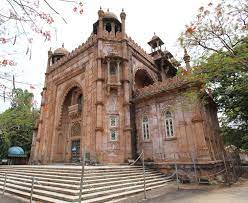Government Museum Chennai: A Cultural and Historical Treasure Trove

Introduction
Nestled amidst the bustling streets of Chennai, India’s vibrant cultural hub, lies the Government Museum, an invaluable repository of history, art, and culture. Established in 1851, this sprawling museum stands as a testament to India’s rich heritage and the city’s enduring commitment to preserving its past. In this article, we will embark on a journey through the Government Museum in Chennai, exploring its history, diverse collections, cultural significance, and the role it plays in preserving and promoting the region’s legacy.
A Glimpse into the Past
The Government Museum Chennai, often referred to as the Madras Museum, has a storied history that traces its roots to the early 19th century. It was founded in 1851 by Dr. Edward Balfour, a surgeon, and naturalist, who envisioned a repository of knowledge that would showcase India’s historical, cultural, and artistic heritage.
The museum’s establishment coincided with a period of increased interest in the preservation of India’s cultural treasures, driven by British colonial administrators and scholars who recognized the significance of India’s rich past.
Architectural Marvels
The Government Museum’s architecture is a fusion of classical and Indo-Saracenic styles, reflecting the eclectic tastes of the colonial era. The grand facades, intricate arches, and ornate detailing make the museum an architectural masterpiece in its own right. Key architectural features include:
- Pantheon Complex: The museum’s main building, the Pantheon Complex, is an impressive structure with a massive central dome and majestic wings. It houses the museum’s art and archaeology collections, including sculptures, paintings, and decorative arts.
- Connemara Library: Adjacent to the Pantheon Complex is the Connemara Library, a charming red brick building that houses an extensive collection of rare books and manuscripts, making it a haven for scholars and researchers.
- Bronze Gallery: The Bronze Gallery, an annex to the museum, showcases a remarkable collection of South Indian bronze sculptures, highlighting the region’s artistic achievements.
- Children’s Museum: The museum also features a Children’s Museum designed to engage young visitors with interactive exhibits and displays, fostering a love for history and culture from an early age.
Diverse Collections
The Government Museum boasts an extensive and diverse collection that spans various disciplines, including:
- Art and Sculptures: The museum’s art collection includes paintings, sculptures, and decorative arts from different periods and regions, showcasing the evolution of Indian artistry.
- Archaeological Artefacts: It houses archaeological artifacts that shed light on India’s ancient civilizations, including the Indus Valley, Mauryan, and Chola periods.
- Numismatics: The museum’s numismatic collection is a treasure trove of ancient and medieval coins, offering insights into the region’s economic history.
- Geology and Natural History: The museum features a geology section with an array of minerals and fossils, as well as a natural history section with taxidermied animals and botanical specimens.
Cultural Significance
The Government Museum Chennai is not merely a repository of artifacts; it plays a pivotal role in promoting cultural awareness and preserving India’s diverse heritage. It serves as an educational institution, hosting exhibitions, lectures, and workshops that engage both students and the general public.
The museum’s role in nurturing scholarship and research is further underscored by the presence of the Connemara Library, which houses a wealth of rare and ancient texts, attracting researchers from across the globe.
Conservation and Preservation
Preserving the treasures within the Government Museum is a continuous endeavor. The museum employs dedicated conservationists who work tirelessly to restore and safeguard artifacts for future generations. Climate-controlled storage and display areas help protect delicate items from environmental damage.
Conclusion
The Government Museum Chennai stands as a cultural and historical gem, a repository of India’s past, and a testament to the enduring commitment of Chennai’s citizens and the wider Indian community to preserving their cultural heritage. It is a place where history comes to life, where art and science converge, and where the rich tapestry of India’s diverse heritage is celebrated and shared with the world.
Visiting the Government Museum is not just an exploration of the past; it is a journey through time and culture, an opportunity to connect with the roots of a nation, and a reminder of the importance of preserving and cherishing the treasures that define our identity and shape our future. The Government Museum Chennai continues to inspire, educate, and captivate all who enter its hallowed halls, ensuring that the legacy of India’s cultural richness endures for generations to come.



